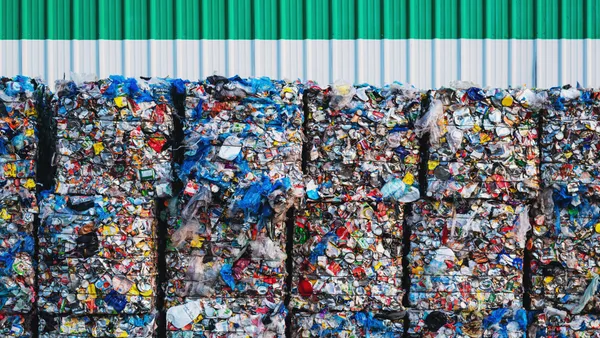Dive Brief:
- A new report from the Department for Environment Food and Rural Affairs (DEFRA) says the U.K.'s diversion rate for "waste from households" dropped to 44.3% in 2015, down from 44.9% the year before, as reported by Resource.
- Within the U.K. diversion rates broke down accordingly: Wales 55.8%, England 43.9%, Scotland 42%, Northern Ireland 42%. Because England accounted for about 83% of the 26.7 million metric tonnes of household waste, and saw a drop in its diversion rate, it dragged down the overall rate despite a jump in Wales.
- The U.K. continued to make progress on the European Union goal of reducing the amount of biodegradable municipal waste sent to landfills to 35% of a 1995 baseline by 2020. The U.K. sent 7.7 million metric tons of biodegradable waste in 2015, 22% of the baseline.
Dive Insight:
This drop was the first since DEFRA began publishing household statistics in 2010, but the diversion rate was still the second-highest during that period. SUEZ Recycling and Recovery UK told BBC News that separate records show this was the first time England's recycling had dropped since 2000.
Recycling contamination has been an ongoing issue within parts of the U.K., particularly England, and this likely played a role in the diversion decrease. Local authorities have been stepping up their education efforts to make sure residents understand what to keep out of their recycling bins. Though the need for even more basic recycling education has also been highlighted after recent data showed that two-thirds recyclable plastic packaging is not being captured in the U.K.
Like recyclers in the U.S., those in the U.K. are still adapting to changes in the material stream due to new packaging. On top of that, they also face uncertainty about European Union directives and trade policies due to Brexit. Though the rates are not directly comparable, and the U.K.'s waste infrastructure is different for a variety of reasons, it still appears to be ahead of the U.S. diversion rate which recent data estimates is somewhere in the range of 27% to 34.6%.













